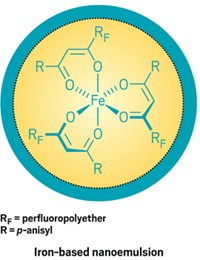Advertisement
Grab your lab coat. Let's get started
Welcome!
Welcome!
Create an account below to get 6 C&EN articles per month, receive newsletters and more - all free.
It seems this is your first time logging in online. Please enter the following information to continue.
As an ACS member you automatically get access to this site. All we need is few more details to create your reading experience.
Not you? Sign in with a different account.
Not you? Sign in with a different account.
ERROR 1
ERROR 1
ERROR 2
ERROR 2
ERROR 2
ERROR 2
ERROR 2
Password and Confirm password must match.
If you have an ACS member number, please enter it here so we can link this account to your membership. (optional)
ERROR 2
ACS values your privacy. By submitting your information, you are gaining access to C&EN and subscribing to our weekly newsletter. We use the information you provide to make your reading experience better, and we will never sell your data to third party members.
Physical Chemistry
Copper Complex Lights Up Alzheimer’s Lesions
Medical Imaging: Copper-coordinated ligands bind to amyloid-β plaques, providing long-lived radioisotopes for brain imaging
by Louisa Dalton
October 8, 2013

In the last decade, doctors have started to use small-molecule tracers to detect clumped protein plaques in the brains of living Alzheimer’s disease patients. Last year, the Food and Drug Administration approved a fluorine-18-based compound that binds to the plaques and produces a signal detectable through positron emission tomography (PET). Now Australian researchers present a new copper complex that does the same but has a longer half-life (J. Am. Chem. Soc. 2013, DOI: 10.1021/ja4057807). The long half-life and simple chemistry of the compound could make amyloid imaging more widely available, the researchers say.
By imaging the protein lesions, doctors can compare the amount of plaques in a patient’s brain with that person’s cognitive deficits to better understand how Alzheimer’s disease progresses, says Paul S. Donnelly, a chemist at the University of Melbourne, in Australia.
The radioactive carbon-11- and fluorine-18-based tracer compounds currently available have relatively short half-lives—no longer than two hours, Donnelly says. Such short half-lives mean the tracers are best created at the same facility as the one running the scans. Generally only major hospitals have a cyclotron to produce the radioactive isotopes. Tracers with longer half-lives could be shipped to rural imaging facilities, expanding the use of the PET scans for Alzheimer’s patients, Donnelly says.
Donnelly and his colleagues designed a ligand that complexes with any copper isotope, including copper-64, which has a 12-hour half-life. The chemists based their ligand on a styrylpyridine functional group that is known to bind to the plaques. To that group, they added a thiosemicarbazone-pyridylhydrazine group, which complexes with copper.
Compared to the fluorine-18 tracer, the complex is easy to synthesize: The researchers just mix the ligand with a copper isotope in water.
To test the complexes, the chemists added the tracer to post-mortem brain tissue from Alzheimer’s patients and used fluorescence microscopy to detect the plaques. The researchers’ next step is to test the compound in a transgenic mouse model for Alzheimer’s.




Join the conversation
Contact the reporter
Submit a Letter to the Editor for publication
Engage with us on Twitter